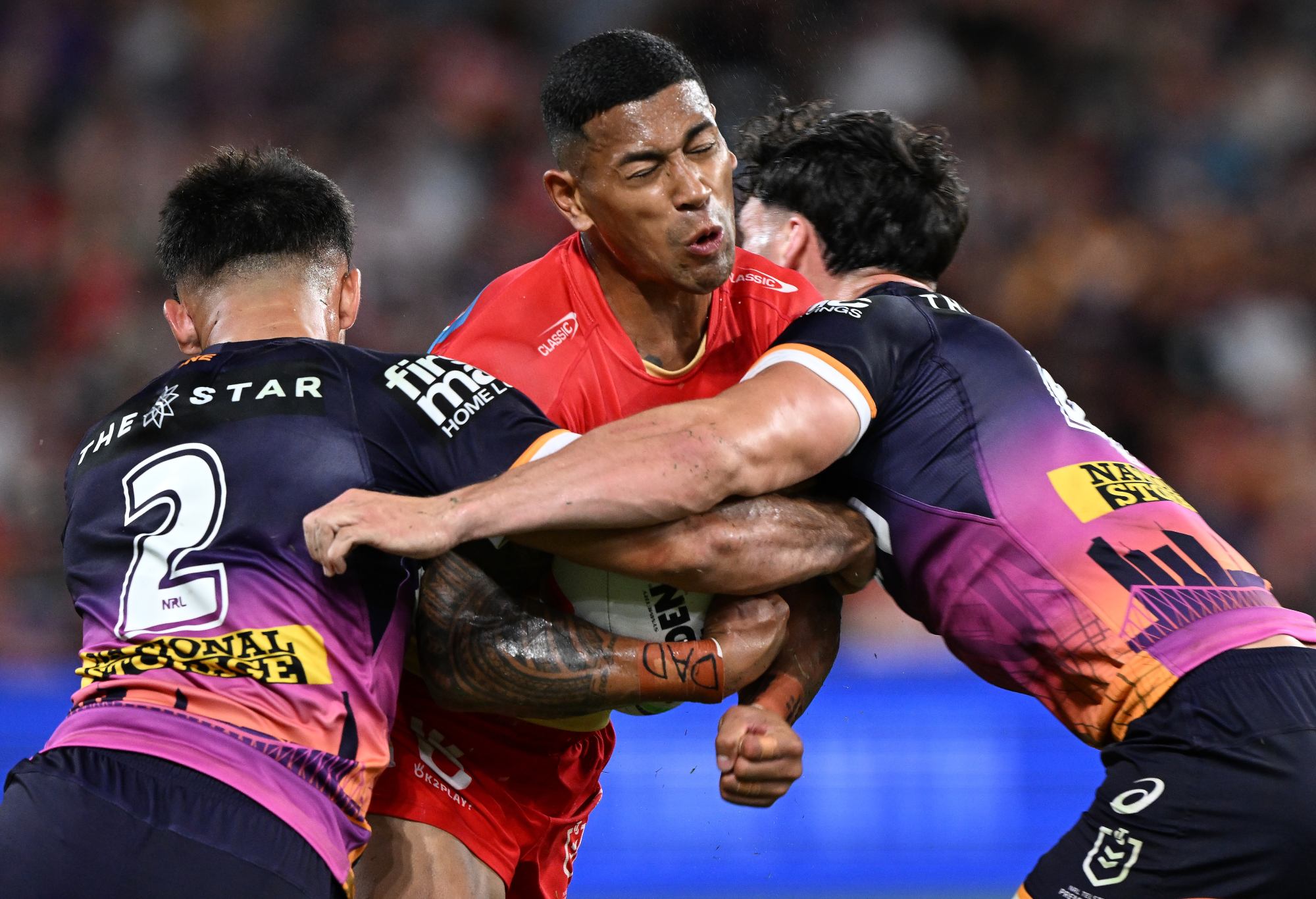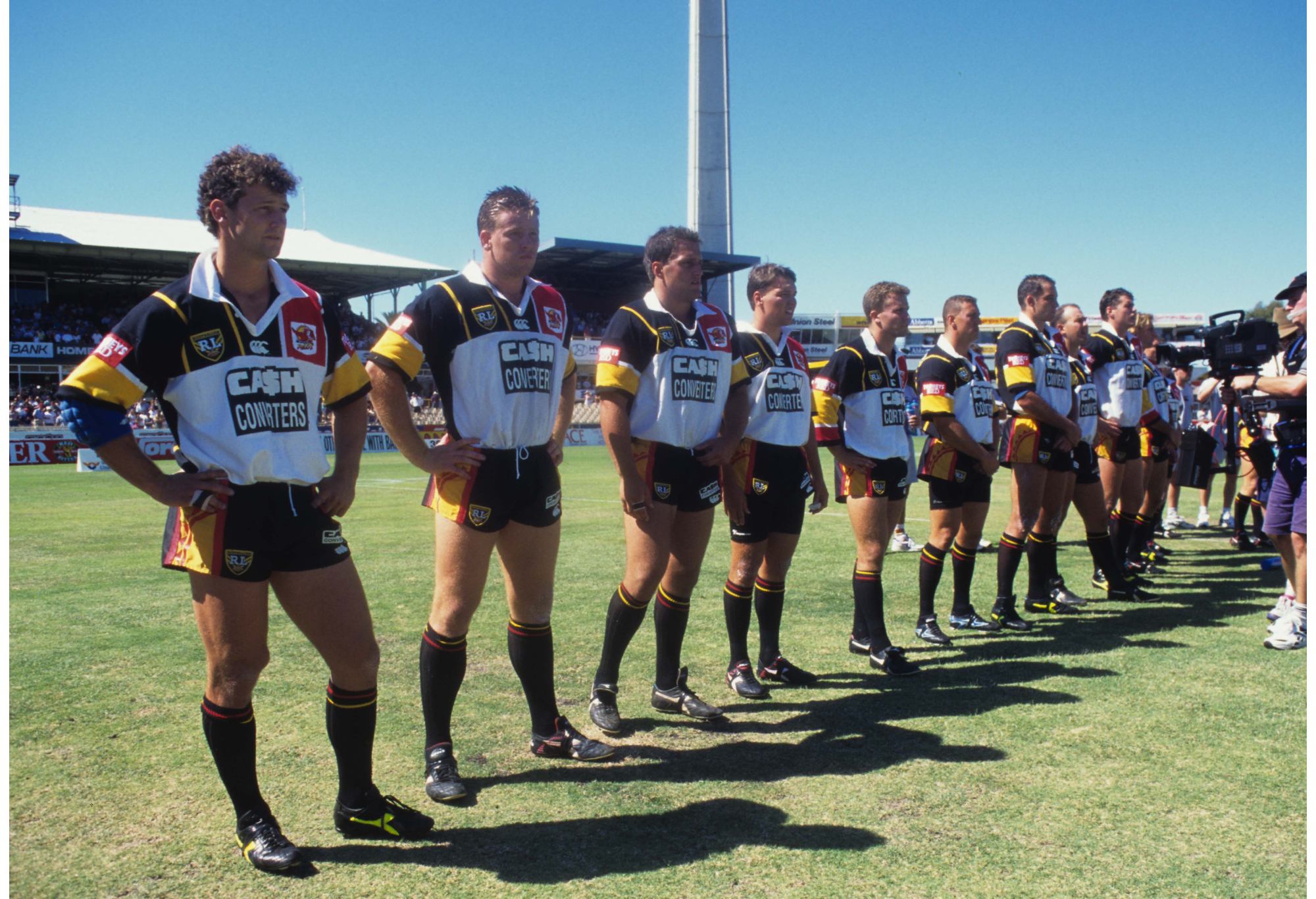When it comes to the NRL’s great expansion debate, the sport faces a fundamental philosophical question that must be answered before the 18th team gets a licence.
Does rugby league in Australia want to get larger by breaking new ground in vacant markets or is it better to make the sport stronger in an under-represented heartland area like Brisbane.
Shane Edwards certainly thinks the latter is the way to go.
The former Broncos chief executive is heading up the Brisbane Tigers bid to become the next team when the NRL decides to expand, likely to be sometime in the next 3-5 years.
As is often the case when the league is looking to build its base, various options have been floated from new teams in previous rebel outposts like Adelaide and Perth, another team in Melbourne or New Zealand, a perennial candidate in the Central Coast or a Pasifika team based out of Cairns that would potentially encompass Papua New Guinea, Fiji, Tonga and Samoa.

Brisbane Tigers NRL bid chairman Shane Edwards and club CEO Brian Torpy. (Photo: Brisbane Tigers)
And the battling North Sydney Bears are continuing their decades-long vigil of hoping to attach themselves to one of the licences to at least return in some capacity.
Brisbane Tigers tried to get into the big league a couple of years ago when they launched a bid under the Firehawks brand which lost out to Redcliffe’s Dolphins proposal.
After licking their wounds at being overlooked, they are back with a $10 million upgrade to their redeveloped Totally Workwear Stadium which would be their training base for an NRL team that would play home games at Suncorp Stadium while representing the fertile league territory south of the river in Brisbane, stretching out to the city’s western corridor.
The Tigers name and colours would need to be altered and the team would not necessarily be known as the Firehawks, according to Edwards, who said that would be sorted out later in the process.
What is certain, he said, was that the bid was financially strong and made sense for the NRL due to the club’s tradition as a Queensland Cup powerhouse and the massive area of league fans they’d represent that will only get bigger.
“There’s been a fair bit of speculation for several months out in the marketplace about where teams should be located. We wanted to show the NRL that we have committed to implementing things we said we would do in our 17th team bid,” he said, pointing to their high-performance and community centre, pathways set-up and youth mentoring programs.
“If you divide Brisbane by the river and a lot of Brisbanites do with a bit of friendly rivalry about which side of the river you live on, there’s 600,000 more people on the south side of Brisbane and both NRL teams at the moment are based on the north side of the river. And our next closest team is 71km away in the Titans.
“We went through the draw this year and there’s nine weekends when neither the Broncos or the Dolphins are playing at Suncorp Stadium in a 27-round competition. That’s a third of the season so we would fit nicely in there. When they said there’s going to be a second team in the Brisbane area they said that there’d be a game at Suncorp every week. That just doesn’t eventuate because of the complexities of the draw, but a third one would certainly assist that.”
Edwards was at the helm of the Broncos when they had no competition in the Queensland capital from 1995-2002 and conceded that the introduction of the Dolphins and potentially another team in the city was long overdue.
“When I was there, I always protected that monopoly, as you call it,” he said. “I think the NRL made a good decision (bringing in the Dolphins) and I think the Broncos can see that now.
“The NRL was concerned about putting the second team in and actually taking away from the fan base of the Broncos but their attendance numbers are up 4000 on average per game and they’ve increased their membership on last year. Their television ratings are up 20%.
“And then you look at the Dolphins and they’re in the top three for crowd attendances on average. They’ve had record television ratings, merchandising, sales and sponsorship.

Dolphins winger Jamayne Isaako is roped in by the Broncos. (Photo by Bradley Kanaris/Getty Images)
“If the NRL saw fit to allocate us the 18th licence we can do a similar role on the south side, which includes Logan, through Ipswich and we would be comfortable to talk to Toowoomba about working with them.”
No professional sporting outfit can survive, especially an expansion team, in the crowded Australian landscape without serious financial clout but Edwards said that would not be a problem.
“We can compete in all terms with the Broncos and the Dolphins in regards to cash assets and capital. We’ve got Easts Leagues Club, which is one of the most profitable in Queensland and provides great funding,” he said.
“We just want to let everyone know that we’re a club that’s 90 years old this year. We’ve been in nine of the last 30 state league grand finals. We’ve got great tradition, a strong financial base behind this and we’ve got great pathways in place.”
The federal government is keen for the NRL to bring in a Pasifika team to enhance Australia’s ties to the region and while Edwards was not opposed to the idea coming to fruition after their team gets the nod, he said there are many unanswered questions.
“I think the Pasifika idea sounds good, but how functional and how it can be implemented, that’s a decision for the NRL but we know that is probably going to be our major competition.”
As for other options for the changing face of the league, he said “the days of relocation have gone” for Sydney teams who have never been willing to entertain the idea.
Also, he added that with the hefty financial grants that have been provided and the flow-on effects of the television rights deals that Sydney teams should not struggle to make ends meet.

Western Reds captain Brad Mackay with the foundation team in 1995. (Getty Images)
Edwards said he didn’t have a problem with the NRL trying to set up teams in AFL markets like Perth or Adelaide … down the track.
“Look at the AFL, they’re doing that but at what cost? They’ve spent hundreds of millions of dollars in Sydney with two teams and one in Brisbane plus the Gold Coast. They’re still contributing to those regions.
“I just see that generating income to put more money back into development (in a traditional area) is a better way to do it than putting money into a club that needs funding for a number of years in either Perth or Adelaide who don’t have the infrastructure.
“You look at Melbourne Storm, for instance. Most of their players are still coming out of Queensland and NSW and I saw the other day their Friday night game was on Gem down there, not even on the main television channel.
“I think the Dolphins has shown south-east Queensland can definitely support another team. We’re underrepresented in the NRL at the moment, and the funds that would be generated would be significant and they can be put back into the development of the game and those other regions.
“As long as we’re No.18, we’re happy.”
It’s hard to get an accurate gauge on how significant the AFL threat is to the NRL in South-East Queensland but Edwards said “it’s very real”.
“In the area we’re talking about in the south-west corridor, the Brisbane Lions have their club in Springwood and then a magnificent training facility that’s being built out in Springfield which is in Ipswich. So they’ve got either end covered and they’re working in schools in between areas,” he said.
“It’s always been a very strong traditional area for rugby league. And we’ve got to make sure that we maintain that and actually grow that base. I think we’re under-resourced in that area. And the NRL acknowledge that.
“If you look at the population coming through that region – three of the fastest growing areas in Australia between now and 2031 are the Gold Coast, Logan and Ipswich. It’s projected another 275,000 People will be moving into that Logan and Ipswich region to take the population base to just on a million people.”
There are boom times ahead for Brisbane with the Olympics to be held in the city in 2032 but Edwards said they would not need government assistance for their bid, however any improvements to areas like public transport would only be beneficial for them.
Edwards said they could be ready for entry into the NRL at the drop of a hat whether it’s fast-tracked in 2025 or ‘26, or held back later to coincide with the next broadcast rights deal.
And for the time being, they are in regular dialogue with the NRL and are ready and waiting for the bid process to officially be declared open.
The ARL Commission will ultimately decide on the best bid based on merit but there will be plenty of debate, before, during and after the process on whether the NRL needs to build from its existing base in an area like Brisbane’s south-west or explore strange new worlds, to seek out new life and new civilisations in Perth and Adelaide.
It’s going to be an epic trek either way.































































































